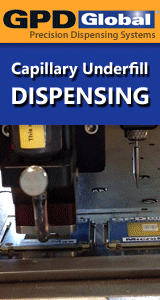Flux manufacturers have already reported a remarkable shortage of stocks for alcohol-based fluxes used in electronics manufacturing. Interrupted supply chains and an increasing demand for alcohol as a basis for disinfectants has resulted in massive price increases.
SEHO offers a solvent-free alternative – the SEHO PlasmaFluxer. In a plasma process, flux powder is deposited at the solder joints with an outstanding adherence and long-term stability. Simultaneously, product quality can be improved remarkably.
The activation of components and the PCB surface is the key factor to obtain a connection between the solder and the terminations. This task is taken over by the flux, which in wave soldering processes is often alcohol-based and containing only a small amount around three percent of active components, that indeed are necessary for the process. Alcohol is only needed for application of the flux and needs to be dried off before entering the solder wave. Flux residues are still an issue, particularly due to the increasingly extreme operating conditions electronic assemblies are exposed to. Non-activated flux residues that remain on the assembly may cause severe quality issues or even the complete breakdown of the assembly.
The PlasmaFluxer from SEHO uses cold-active plasma to melt micrometer sized powder of pure adipic acid and deposit it on the PCB surface. A liquid carrier material is not needed, and the gas that is used to create the plasma flame is Nitrogen, which is widely spread in wave soldering technology. When processing assemblies, an aerosol formed out of melt-able flux particles and Nitrogen is led into the plasma flame and directed to the PCB surface. Once the aerosols touch the surface, the particles solidify and form a long-term stable coating.
The plasma process substitutes the conventional wet-chemical flux activation with a dry process. Soldering results that are achieved with this process are extremely good and they are directly comparable to standard liquid fluxes, even with complicated structures.
An additional advantage is the cleanliness of the PCB surface after the soldering process. Therefore, an additional cleaning process can be avoided. Additionally, the degree of contamination of the fluxer work area and the soldering system is smaller, as there is no evaporation of solvents from the flux. Consequently, maintenance requirements are remarkably reduced while availability of the process equipment is increased.
Solvent-based fluxes are declared as hazardous material (class 3) and special measures are necessary in terms of storage, handling and waste management. In comparison, the handling and storage of powder is much easier, resulting in an overall reduction in manufacturing costs, and additional benefits emerge from the environment friendly concept of the plasma fluxing process.
The precise, selective flux application method leads to a reduction of the flux amount needed, and with the additional elimination of liquid, remarkable savings are achieved in the total flux material costs. As a result, the initial costs for the plasma fluxing system can be made up within a short time.
A particular benefit of the plasma fluxing method is its ability to “revive” overaged PCBs that show perfect wetting results. “The outstanding long-term stability of the flux that has been applied in a plasma process is remarkable,” explains Dr. Andreas Reinhardt, Director R&D at SEHO. “This allows us to apply a flux coating at our Technology Center in Germany and return the boards to customers. The soldering process then can be performed at customer site on their own soldering machine, with the standard fluxer being deactivated.”







